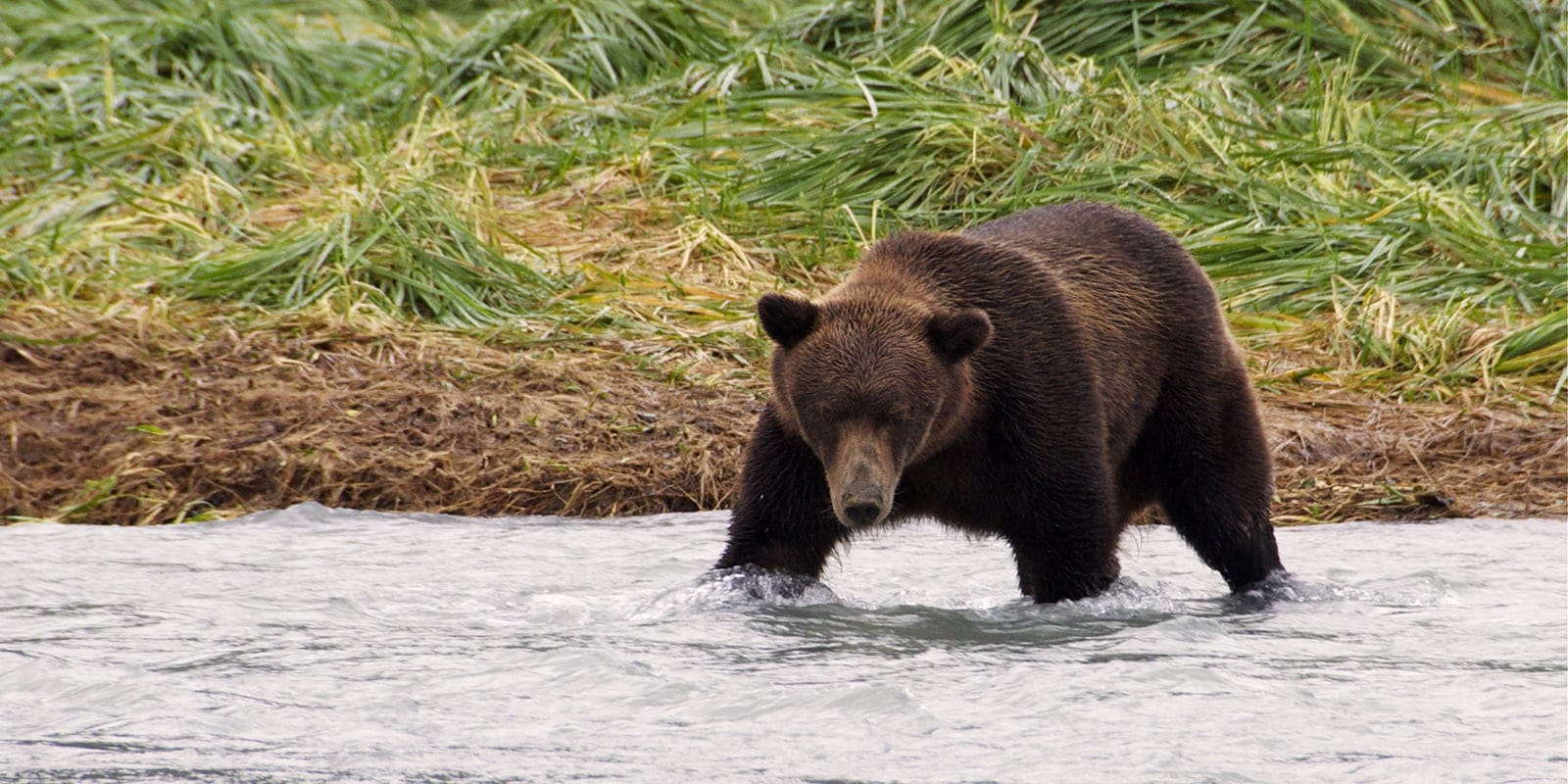Bears are magnificent creatures and they're exciting to see in their natural habitat—but ideally from an appropriate distance. When hiking or backpacking in an area where black bears or grizzlies live, there are precautions you can take so you're less likely to have a negative bear encounter and things you can do to be more prepared to act if you do have one.
Video: Backpacking in Bear Country
Planning Your Hike in Bear Country
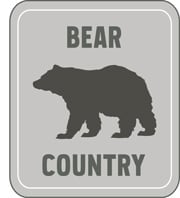
Before you head into the backcountry, find out what bear-related regulations are in place at your destination. Some parks require bear canisters; others don't. Others have specific storage regulations like bear poles, cables or lockers. Make sure you know before you go.
In national parks where grizzlies live, such as Glacier or Grand Teton, rangers encourage you to carry bear spray. In others, such as Yosemite, where only black bears live, bear spray is not even permitted.
How to Avoid Bears While Hiking
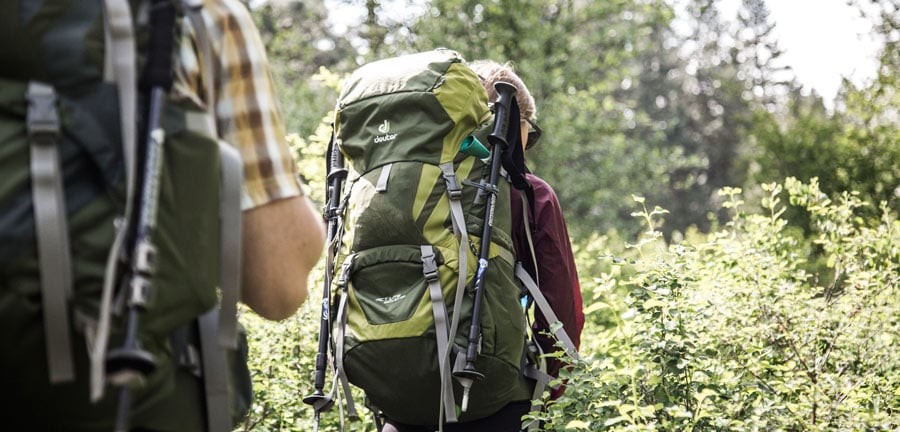
In some areas, even before you get to your first campsite, you may be lucky enough to spot a bear. Your main task will be to hike without startling one at close range, especially a mother with cubs. Here are some guidelines that are particularly important to follow in bear territory.
- Avoid hiking at dawn or dusk. That's when bears are most active.
- Hike in a group of four or more and stay close together; groups of that size are less likely to be attacked.
- Make noise as you hike in order not to surprise a bear. Try shouting "Hey, bear!" every so often, clapping your hands, clacking your trekking poles together or talking or singing loudly (a benefit of traveling with a group). The National Park Service does not recommend that you whistle, use a whistle or scream—these noises can sound like an animal in pain, which may actually attract a bear. Most bells sold as "bear bells" are not loud enough to be useful until the bear is already very close. Also, be aware of your surroundings at all times. Noisy streams, wind in the trees, bends in the trail and dense vegetation can prevent a bear from being aware of you.
- Carry bear spray. Bear spray contains red pepper derivatives that affect the eyes and respiratory system. It's designed to rebuff an attacking bear (but can affect your own breathing and eyesight, too, if the wind blows it in your face), and empties in only 7 to 9 seconds. It's effective at a distance of 12 to 30 feet and prevents human injuries during a bear attack 98 percent of the time. Carry it directly on your person in a holster, not in your pack (not even in an outside mesh pocket—it could get knocked out). To deploy most models, flick off the safety clip and depress the nozzle. Practice pulling it out of the holster at home before your trip. (It's an aerosol, so you likely can't fly with it; check airline regulations and international restrictions before your trip.)
Warning: In camp, never preemptively spray your tent or pack with bear spray; it's not like mosquito repellent. Its smell may actually attract bears.
How to Discourage Bears in Camp
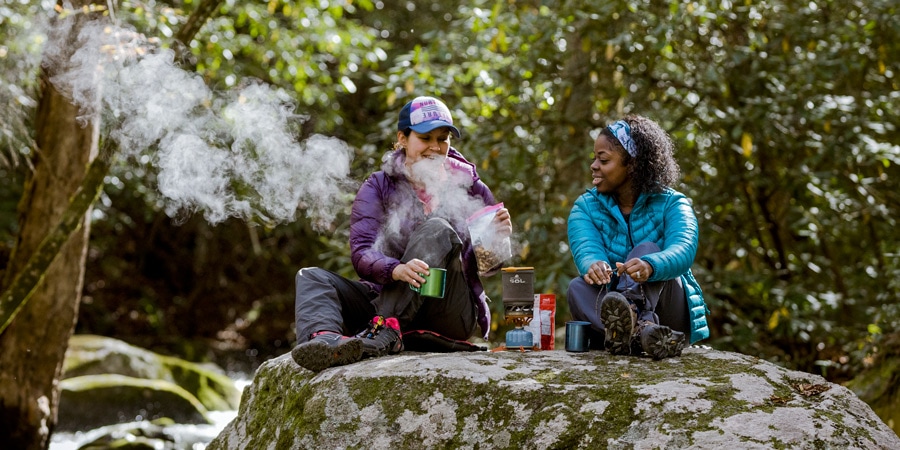
Bears that have tasted human food tend to crave it and may learn to come back for more, becoming a problem; unfortunately, these bears are usually killed. So for the bears' welfare and your own safety, keep your food safely protected. Always follow these guidelines.
- Never leave food out and unattended. Store food in a safe place during both day and night; wildlife is always active.
- Use proper food storage techniques: Always use a bear canister, bear bag, tree- or pole-hang bag or provided metal food locker to stow anything with a scent: food, snacks, empty food containers and cookware (even if cleaned); personal hygiene products such as toothpaste, feminine products and sunscreen; every little bit of trash; and even the clothes you wear for cooking (clothing can absorb food odors). Some hikers even include their stove. See our article on food handling and storage for more details about how to use a bear canister or bear bag, and how to hang your food.
- Keep odors at a distance: Cook your meals and wash your dishes (and hands) well away from your tent so odors don't attract bears near where you sleep. Use only a tiny bit of liquid unscented soap.
- Follow Leave No Trace principles (as well as any official regulations) for disposing of human waste.
Black Bears vs. Grizzlies: What To Do if You Encounter a Bear
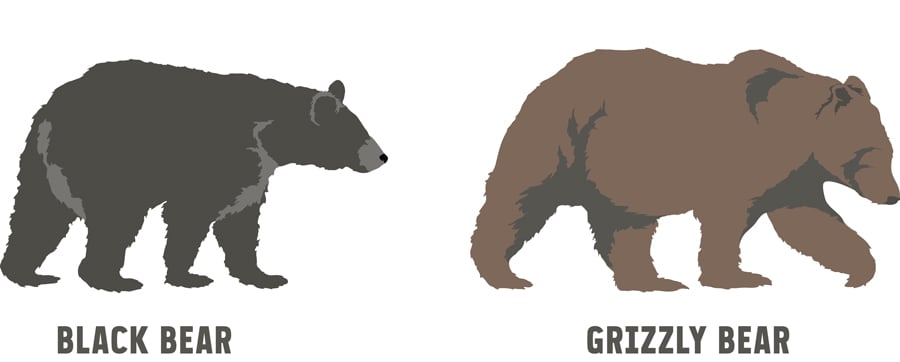
It's important to know that most bears are wary of humans and will likely flee as soon as they smell, hear or see you. However, bears are unpredictable and dangerous, so always give a bear a wide berth when possible and be prepared for it to not be afraid.
The best response to a bear encounter varies depending on the type of bruin you're dealing with. But fur color isn't a good enough indicator because both black bears and grizzly bears can range anywhere from blonde to black.
Black bears live throughout much of the country, so chances are you'll see one at some point if you hike a lot. Black bears are much smaller than grizzlies; they also have no shoulder hump, taller ears and a straight face profile.
Grizzlies, while widespread in Alaska and western Canada, live in only a few places in the Lower 48, primarily Wyoming, Montana and Idaho. Grizzlies are much larger than black bears and have distinctive characteristics to look for: a prominent shoulder hump, small rounded ears and a "dished-in" or concave face profile.
What To Do if You Encounter Either Type of Bear
- Never approach it.
- If you see bear cubs, do not get between them and the mother. Mother bears are particularly dangerous and have been known to charge and attack at close range without warning.
- If you spot a bear before it sees you, back away slowly, keeping your eyes on it and trying to prevent it from noticing you.
- If you're with others and the bear does see you, group together to look more imposing.
- Retreat and reroute your travel if possible, giving the bear a wide berth. If you can't progress on the trail, it's better to postpone your hike.
- If you have bear spray, get it ready.
- Fight back in any of the following situations: You're attacked in your tent; at night; or after being stalked.
What To Do if You Encounter a Black Bear

- If a black bear approaches you, raise your arms to look larger and yell loudly, bang pots together or throw objects to scare it off.
- Grab a long, sturdy stick for defense.
- If you're in camp, quickly lock away any food in a bear canister or metal locker, or carry the food with you (even if it's in a cooking pot) as you back away. It's important to not let a bear get your food.
- If the bear seems more interested in your food than you, drop it only as a last resort and move away.
If a black bear attacks you, do not play dead. It is treating you as prey. Fight back aggressively. Use sticks and rocks and punch its eyes and nose.
What To Do if You Encounter a Grizzly

- If a grizzly stands up to look at you, it's assessing you. Talk to it calmly, do not make eye contact and back away slowly—you don't want to appear as a threat.
- If a grizzly bluffs charging you, it is trying to scare you away. Its ears will be up and it may huff and bound toward you. Try not to panic; stand your ground and talk to the bear to let it know you're friendly. Get your can of bear spray ready. If the bear turns and retreats after a bluff charge, continue to back away.
If a grizzly attacks you, play dead. When a grizzly bear attacks, it will lower its head and its ears will lie flat as it charges. Use your bear spray when it reaches roughly 30 feet (or the recommended distance for your particular bear spray). Aim low. If that doesn't deter the bear, play dead: Lie flat on your stomach with your pack between you and the bear, covering the back of your neck with your hands. Use your elbows and spread legs to try to prevent being rolled over. If the bear does flip you over, keep rolling until you're on your stomach again.
